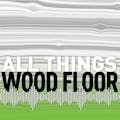There are two ongoing criminal investigations in the U.S. and Germany where DNA analysis is being used to prove timber was illegally sourced. The technology that allows researchers to reconstruct and match DNA from processed wood can be used to determine if a floor or a coffee table is made from illegally harvested timber.
This latest tool in the fight against illegal logging requires only a dice-sized sample to determine a tree's species and country of origin. The process of reconstructing DNA, which Professor Andrew Lowe described to Mongabay.com as being like putting a jigsaw puzzle together without having a picture to guide you, can be done for as little as 1 percent of the cost of the timber.
The resulting DNA fingerprint is then compared with an ever-expanding database of tree DNA samples to identify the original location of the timber. International research teams have compiled DNA maps of Indonesia, Malaysia, Costa Rica, Mexico, Guatemala, French Guyana, Brazil, Cameroon, Nigeria, and Gabon and are currently focusing their efforts in eight more African countries from the Congo basin, according to Mongabay.
With the Lacey Act and the EU Timber Regulation requiring companies to prove their products are legally sourced, DNA testing could become more popular. Some companies are already selling wood with DNA certification stamps, and the American Hardwood Export Council is now considering offering DNA verification, Mongabay reported.
























